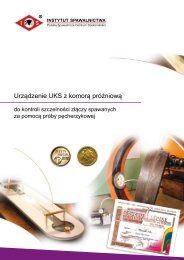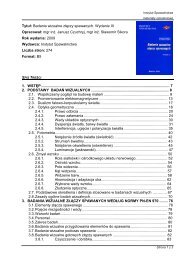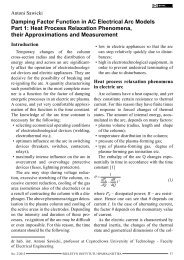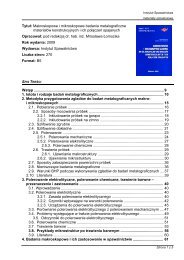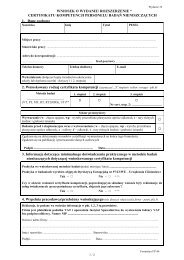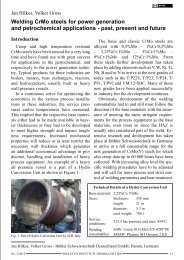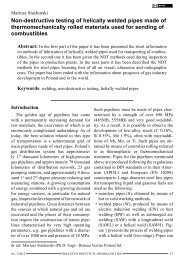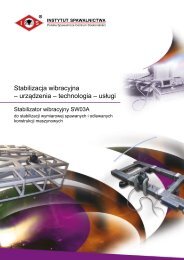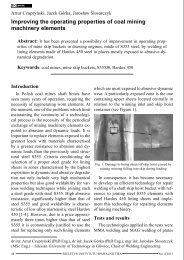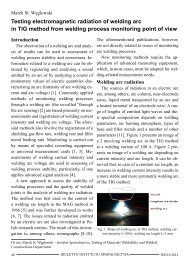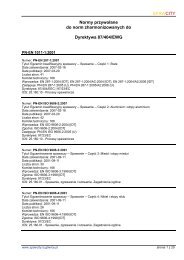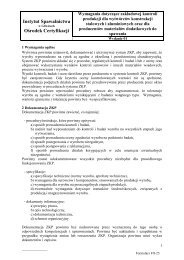Biuletyn Instytutu Spawalnictwa No. 01/2012
Biuletyn Instytutu Spawalnictwa No. 01/2012
Biuletyn Instytutu Spawalnictwa No. 01/2012
You also want an ePaper? Increase the reach of your titles
YUMPU automatically turns print PDFs into web optimized ePapers that Google loves.
ectangular pulse, P i max<br />
=1752 W<br />
shaped pulse, P i max<br />
=3354 W<br />
Fig. 12. Geometry of weld in overlap joint of plates of DX-53D steel,<br />
made with laser beam emitted in pulsed mode of various pulse shape;<br />
diameter of focus area 0.8 mm, emission frequency 8 Hz, pulse energy<br />
10.5 J, pulse duration 6 ms, welding rate 2.6 mm/s [2]<br />
rectangular pulse, P i max<br />
=2628 W<br />
shaped pulse, P i max<br />
=5088 W<br />
Fig. 13. Geometry of weld in overlap joint of plates of DX-53D steel,<br />
made with laser beam emitted in pulsed mode of various pulse shape;<br />
diameter of focus area 0.8 mm, emission frequency 8 Hz, pulse energy<br />
10.5 J, pulse duration 4 ms, welding rate 2.6 mm/s [2]<br />
ding using a continuous emission laser<br />
beam. The metal becomes molten<br />
and crystallised in a cyclical manner<br />
in accordance with the laser pulse<br />
emission frequency. The re-melting<br />
of part of a weld enables the off-take<br />
of confined zinc vapours. This<br />
re-melting is also facilitated by the<br />
appropriate modulation of the course<br />
of power throughout the duration of<br />
a pulse (pulse shape).<br />
Figures 12 and 13 present the socalled<br />
“through welds” (formed by<br />
melting through one of the plates being<br />
joined) in overlap joints made of<br />
3mm-thick cold-formed galvanised<br />
low-carbon steel DX-53D (acc. to PN<br />
-EN 10346:2009). Welds were made<br />
with a laser beam of a rectangular<br />
pulse and that of shaped pulses [2].<br />
The contact gap between the plates<br />
being joined was 0.02mm÷0.04mm<br />
and provided inadequate off-take of<br />
zinc vapours while welding with a<br />
rectangular pulse. A favourable effect<br />
on the process of welding was<br />
obtained by applying laser beam pulses<br />
of a falling power curve at the final<br />
phase of a pulse.<br />
Summary<br />
The possibility of shaping the pulse<br />
of a laser radiation beam emitted<br />
in pulsed mode (i.e. the possibility of<br />
shaping changes in power within the<br />
duration of one pulse) is of significant<br />
importance particularly in laser<br />
welding of precision elements as it<br />
influences the amount of heat supplied<br />
to the material. A specific laser<br />
beam shape enables precise supply<br />
NR <strong>01</strong>/2<strong>01</strong>2<br />
BIULETYN INSTYTUTU SPAWALNICTWA<br />
13



